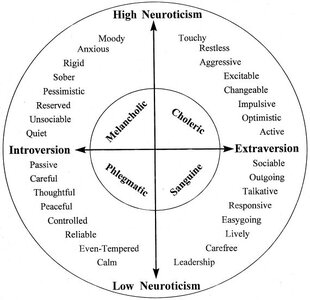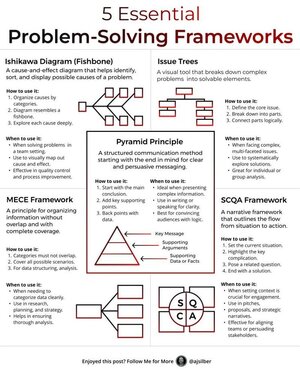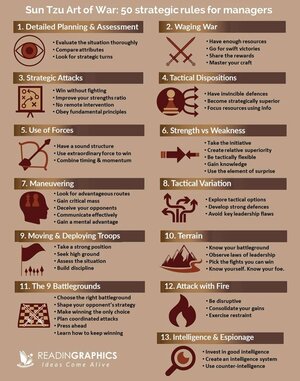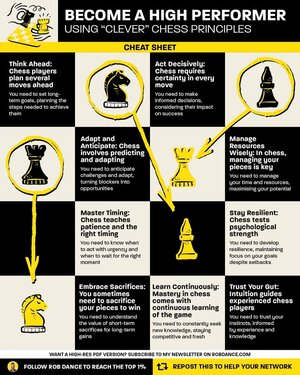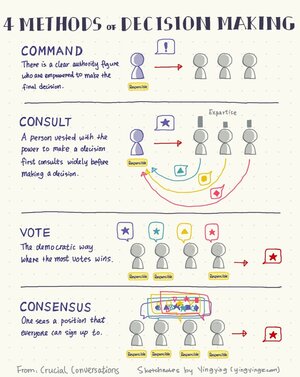- Joined
- Feb 24, 2024
- Messages
- 448
- Thread Author
- #1
1.A philosophical taxonomy:
Critical thinking results from the interaction of a set of dispositions toward critical thinking with a set of abilities for critical thinking.
(a)Seeking a clear statement of the thesis in question.
(b)seeking reasons.
(c)trying to be well informed.
(d)trying to remain relevant to the main point.
five main categories
1.elementary clarification
2.basic support
3.inference
4.dvanced clarification
5.strategy and tactics
Elementary classification consist of focusing on a question, analyzing arguments, and asking and answering questions of clarification and/or challenge. Basic support involves judging the credibility of a source and overserving and judging observation reports. Inference comprises deducing and judging deductions, inducing and judging inductions, and making and judging value judgements. Advanced clarification involves defining terms, judging definitions, and identifying assumptions. Finally, strategy and tactics include deciding on an action and interreacting with others.
2. A psychological taxonomy
Sternberg's componential account of thought
1.metacompeonets
2.performance components
3.knowledge-acquisition components
Meta components are the higher order executive processes used to plan what one is going to do, monitor is while one is doing it, and emulate it after it it done. The meta components include recognizing that a problem exists, defining the nature of the problem, deciding one a set of steps for solving the problem, ordering these steps into a coherent strategy, deciding on a form a mental representation for information, allocating one's time and resources in solving a problem, monitoring one's solution to a problem as the problem is being solved, and using feedback regarding problem solving after one's problem solving has been completed. Performance components are lower order, nonexecutive processes used to execute the instructions of the meta components and provide feedback to them. Performance components vary by domain of performance, for example, inductive reasoning, deductive reasoning, spatial visualization, reading an so on/ Consider, for example, the performance components of induction. These include encoding stimuli, comparing stimuli, inferring relations between stimuli, mapping relations between relations, applying relations from one domain to another, judging potential responses, and responding. Knowledge-acquisition components are the processes used to learn concepts procedures. Three such components are selective encoding, which involves screening relevant from irrelevant information; selective combination, which involves putting together the relevant information in a coherent and organized way; and selective comparison, which involves relating old, previously know information to new, about-to-be-learned information.
3. An educational taxonomy
Bloom has proposed a hierarchical taxonomy for cognitive information processing. At the lowest level is knowledge. The next level is comprehension, which requires one to go beyond knowledge in that one must understand what one comes to know.. At the next level is application, which is a level higher yet in that the individual must also be able to apply what he or she has comprehended. A level higher up is analysis, which requires one to appraise critically what one comprehends and applies. Still higher is synthesis, which requires putting together in a somewhat creative way the knowledge one has analyzed in carious domains. At the highest level is evaluation, which is a broad and critical appraisal of the knowledge one has analyzed and synthesized.
ALL THE THEORIES CITED BELEIVE IN THE IMPORTANCE OF LEARNING, COMPREHENSION, DEDUCTIVE REASONING, AND INDUCTIVE REASNING SKILLS.
Gubbins' matrix of thinking skills
1. Problem Solving
A) Identifying general problem
B) Clarifying problem
C) Formulating hypothesis
D) Formulating appropriate questions
E) Generating related ideas
F) Formulating alternative solutions
G) Choosing best solution
H) Applying the solution
I) Monitoring acceptance of the solution
J) Drawing conclusions
ii. Decision making
A) Stating desired goal/condition
B) Stating obstacles to goal/condition
C) Identifying alternatives
E) Ranking alternatives
F) Choosing best alternative
G) Evaluating actions
iii. Inferences
A). Inductive thinking skills
1.Determining cause and effect
2.Analyzing open-ended problems
3.reasoning by analogy
4.making inferences
5.determing relevant information
6.recognizing relationships
7.solving insight problems
B. Deductive thinking skills
1.using logic
2.spotting contradictory statements
3.analyzing syllogism
4.solving spatial problems
iv. Divergent thinking skills
A. listing attributes of objects/situation
B. generating multiple ideas (fluency)
C. generating different ideas (flexibility)
D. generating unique ideas (originality)
E. generating detailed ideas (elaboration)
F. synthesizing information
V. Evaluating thinking skills
A. distinguishing between facts and opinions
B. judging credibility of a source
C. observing and judging observation reports
D. identifying central issues and problems
E. recognizing underlying assumptions
F. detecting bias, stereotypes, cliches
G. recognizing loaded language
H. evaluating hypothesis
I. classifying data
J. predicting consequences
K. Demonstrating sequential synthesis of information
L. planning alternative strategies
M recognizing inconsistencies in information
N. identifying stated and unstated reasons
O. comparing similarities and differences
P. evaluating arguments
vi. Philosophy and reasoning
A. using dialogical/dialectical approaches
Critical thinking results from the interaction of a set of dispositions toward critical thinking with a set of abilities for critical thinking.
(a)Seeking a clear statement of the thesis in question.
(b)seeking reasons.
(c)trying to be well informed.
(d)trying to remain relevant to the main point.
five main categories
1.elementary clarification
2.basic support
3.inference
4.dvanced clarification
5.strategy and tactics
Elementary classification consist of focusing on a question, analyzing arguments, and asking and answering questions of clarification and/or challenge. Basic support involves judging the credibility of a source and overserving and judging observation reports. Inference comprises deducing and judging deductions, inducing and judging inductions, and making and judging value judgements. Advanced clarification involves defining terms, judging definitions, and identifying assumptions. Finally, strategy and tactics include deciding on an action and interreacting with others.
2. A psychological taxonomy
Sternberg's componential account of thought
1.metacompeonets
2.performance components
3.knowledge-acquisition components
Meta components are the higher order executive processes used to plan what one is going to do, monitor is while one is doing it, and emulate it after it it done. The meta components include recognizing that a problem exists, defining the nature of the problem, deciding one a set of steps for solving the problem, ordering these steps into a coherent strategy, deciding on a form a mental representation for information, allocating one's time and resources in solving a problem, monitoring one's solution to a problem as the problem is being solved, and using feedback regarding problem solving after one's problem solving has been completed. Performance components are lower order, nonexecutive processes used to execute the instructions of the meta components and provide feedback to them. Performance components vary by domain of performance, for example, inductive reasoning, deductive reasoning, spatial visualization, reading an so on/ Consider, for example, the performance components of induction. These include encoding stimuli, comparing stimuli, inferring relations between stimuli, mapping relations between relations, applying relations from one domain to another, judging potential responses, and responding. Knowledge-acquisition components are the processes used to learn concepts procedures. Three such components are selective encoding, which involves screening relevant from irrelevant information; selective combination, which involves putting together the relevant information in a coherent and organized way; and selective comparison, which involves relating old, previously know information to new, about-to-be-learned information.
3. An educational taxonomy
Bloom has proposed a hierarchical taxonomy for cognitive information processing. At the lowest level is knowledge. The next level is comprehension, which requires one to go beyond knowledge in that one must understand what one comes to know.. At the next level is application, which is a level higher yet in that the individual must also be able to apply what he or she has comprehended. A level higher up is analysis, which requires one to appraise critically what one comprehends and applies. Still higher is synthesis, which requires putting together in a somewhat creative way the knowledge one has analyzed in carious domains. At the highest level is evaluation, which is a broad and critical appraisal of the knowledge one has analyzed and synthesized.
ALL THE THEORIES CITED BELEIVE IN THE IMPORTANCE OF LEARNING, COMPREHENSION, DEDUCTIVE REASONING, AND INDUCTIVE REASNING SKILLS.
Gubbins' matrix of thinking skills
1. Problem Solving
A) Identifying general problem
B) Clarifying problem
C) Formulating hypothesis
D) Formulating appropriate questions
E) Generating related ideas
F) Formulating alternative solutions
G) Choosing best solution
H) Applying the solution
I) Monitoring acceptance of the solution
J) Drawing conclusions
ii. Decision making
A) Stating desired goal/condition
B) Stating obstacles to goal/condition
C) Identifying alternatives
E) Ranking alternatives
F) Choosing best alternative
G) Evaluating actions
iii. Inferences
A). Inductive thinking skills
1.Determining cause and effect
2.Analyzing open-ended problems
3.reasoning by analogy
4.making inferences
5.determing relevant information
6.recognizing relationships
7.solving insight problems
B. Deductive thinking skills
1.using logic
2.spotting contradictory statements
3.analyzing syllogism
4.solving spatial problems
iv. Divergent thinking skills
A. listing attributes of objects/situation
B. generating multiple ideas (fluency)
C. generating different ideas (flexibility)
D. generating unique ideas (originality)
E. generating detailed ideas (elaboration)
F. synthesizing information
V. Evaluating thinking skills
A. distinguishing between facts and opinions
B. judging credibility of a source
C. observing and judging observation reports
D. identifying central issues and problems
E. recognizing underlying assumptions
F. detecting bias, stereotypes, cliches
G. recognizing loaded language
H. evaluating hypothesis
I. classifying data
J. predicting consequences
K. Demonstrating sequential synthesis of information
L. planning alternative strategies
M recognizing inconsistencies in information
N. identifying stated and unstated reasons
O. comparing similarities and differences
P. evaluating arguments
vi. Philosophy and reasoning
A. using dialogical/dialectical approaches

